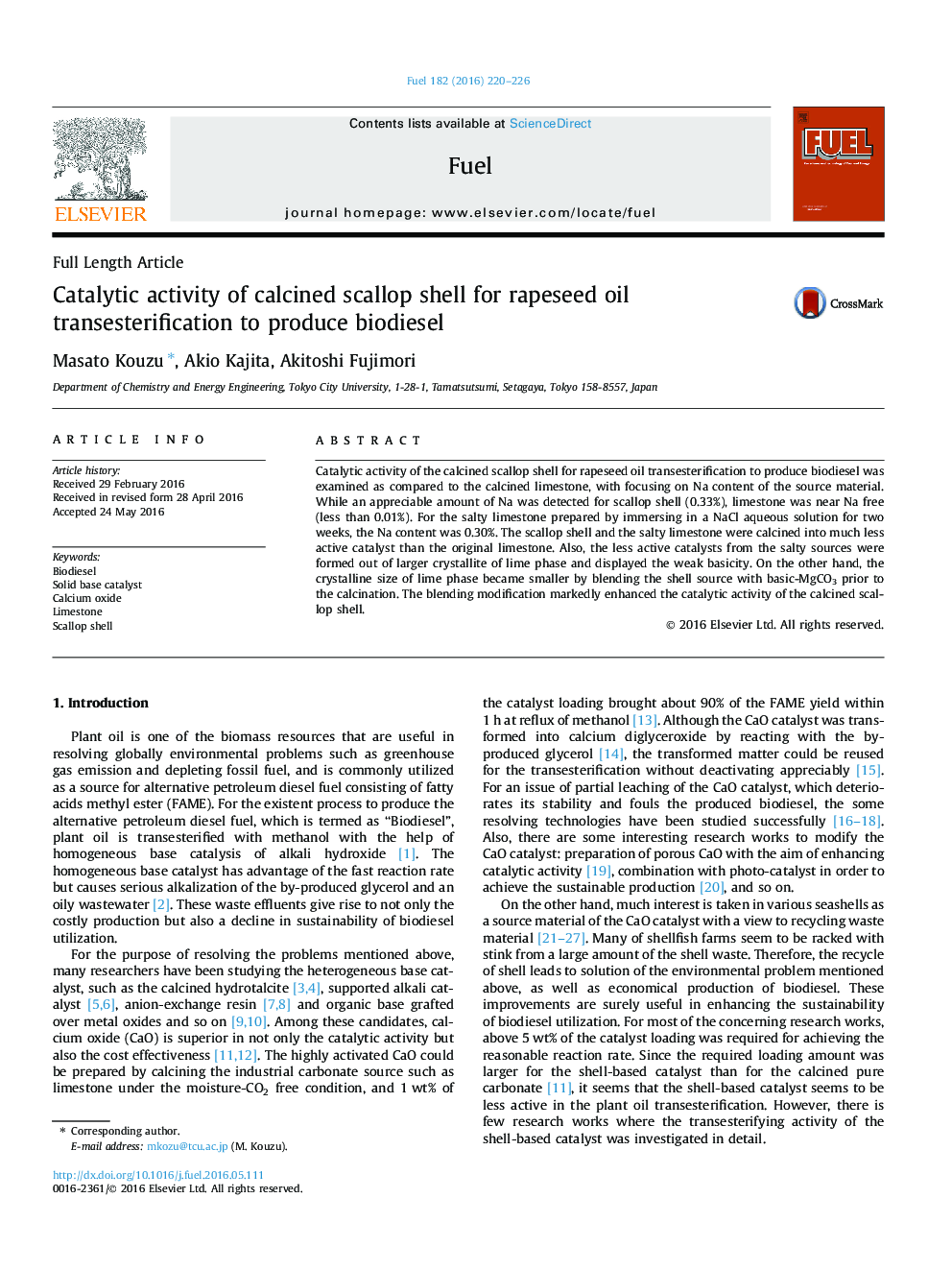| Article ID | Journal | Published Year | Pages | File Type |
|---|---|---|---|---|
| 6633419 | Fuel | 2016 | 7 Pages |
Abstract
Catalytic activity of the calcined scallop shell for rapeseed oil transesterification to produce biodiesel was examined as compared to the calcined limestone, with focusing on Na content of the source material. While an appreciable amount of Na was detected for scallop shell (0.33%), limestone was near Na free (less than 0.01%). For the salty limestone prepared by immersing in a NaCl aqueous solution for two weeks, the Na content was 0.30%. The scallop shell and the salty limestone were calcined into much less active catalyst than the original limestone. Also, the less active catalysts from the salty sources were formed out of larger crystallite of lime phase and displayed the weak basicity. On the other hand, the crystalline size of lime phase became smaller by blending the shell source with basic-MgCO3 prior to the calcination. The blending modification markedly enhanced the catalytic activity of the calcined scallop shell.
Related Topics
Physical Sciences and Engineering
Chemical Engineering
Chemical Engineering (General)
Authors
Masato Kouzu, Akio Kajita, Akitoshi Fujimori,
